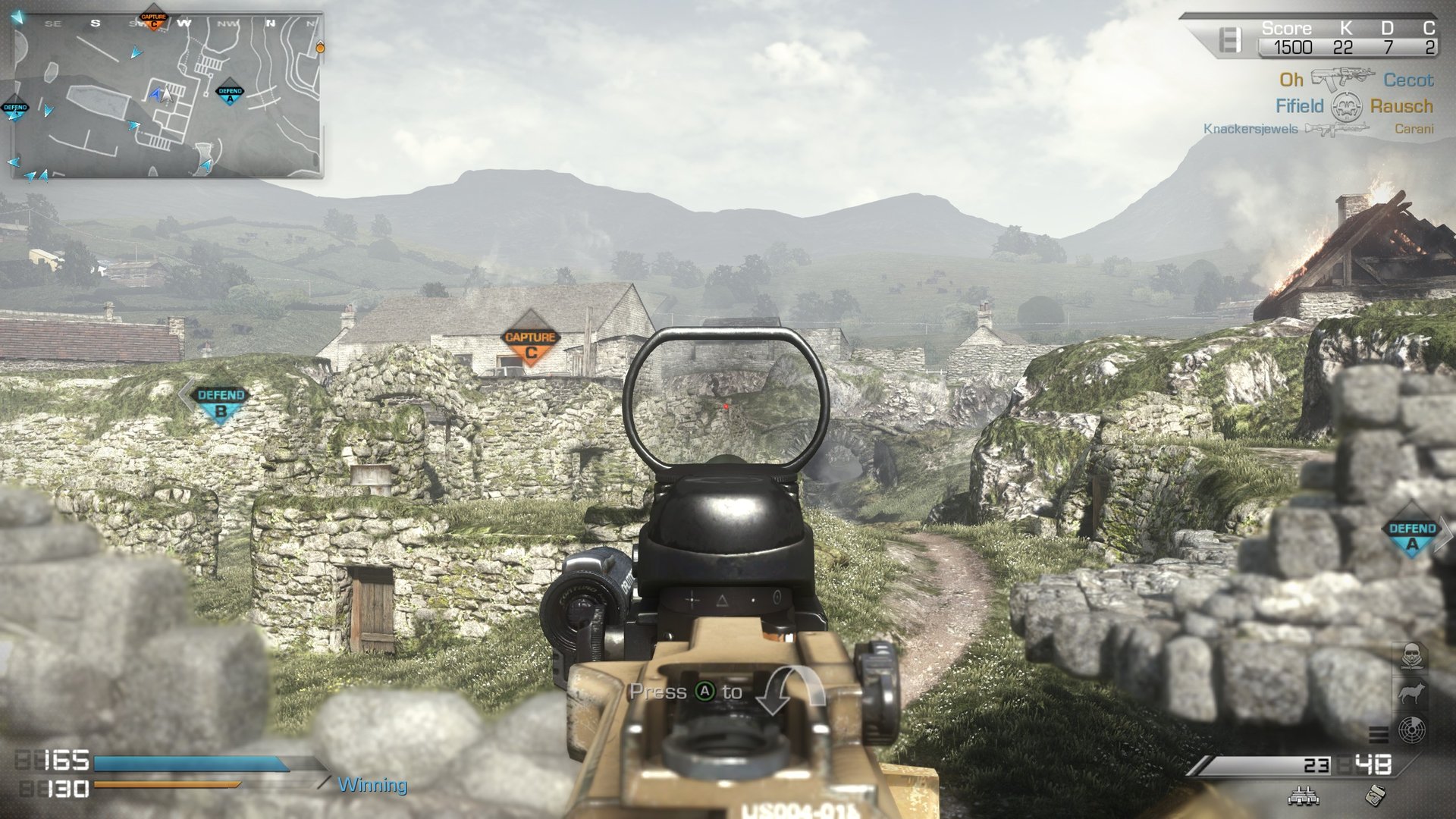
Why Was Call of Duty Ghosts' Multiplayer Hated?
First released in 2018, Call of Duty Ghosts' multiplayer mode received a lot of criticism and players panned the multiplayer. The developers changed the gameplay and added new features which drawn a lot of criticisms. This blog post will explore the reasons players disliked the multiplayer mode.
BLOGA LOOK BACK
Andy
3/9/20257 min read

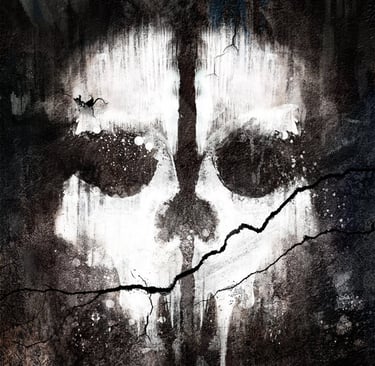
Introduction
When Call of Duty Ghosts first dropped, its multiplayer mode had a fresh take on the formula. The developers had revamped some mechanics and added new features to meet fans' expectations. Yet, the multiplayer ended up being a disappointment with the core elements altered negatively and sparked an outrage by the fans. The gameplay was a huge departure from what fans were used to, especially released after Black Ops II.
Many players hated Call of Duty Ghosts' multiplayer mode when it first released in 2013, for several reasons; some even continued playing Black Ops II. The developers made many changes and added several new features to the multiplayer, sparking a lot of criticisms.
In this blog post, it will go over the reasons the multiplayer was hated by Call of Duty fans and the backlash the mode received because of its changes. This post will explore and examine the alterations the developers made, causing outrage and criticism by the fans. Fans had high hopes for this game due to it being the first Call of Duty game released on the PS4 and Xbox One consoles. Join us as we explore the reasons the multiplayer fell short of expectations.
Why The Developers Designed Multiplayer Like This
Back in 2013, Call of Duty was receiving negative reception by fans because of the franchise using the same engine with the same gameplay every year. During this time, Battlefield became mainstream, reaching a bigger audience, especially with Battlefield 4 releasing in the same year as Ghosts. This led to the developers incorporating similar ideas from Battlefield, causing a massive shift in the gameplay.
The gameplay in Ghosts is much slower, focusing on being more tactical and methodical rather than being action-packed. Consequently, the developers weakened the streaks to prevent players from dominating matches with only a few select streaks. Then, there were some Battlefield influences here and there, such as the dynamic elements. The developers also introduced marksman rifles, placing them in their own category, unlike in previous Call of Duty games.
The game's design unfortunately ruined Call of Duty's appeal. Players found the franchise appealing because of its action-packed, fast-paced gameplay rather than the slower, tactical gameplay. With Battlefield 4 being released in the same year, its release affected Ghosts in a negative direction, raising massive backlash from fans.
Large Maps
Whenever Ghosts' multiplayer is discussed, people always bring up the large maps and slow gameplay as massive issues. Call of Duty features action-packed gameplay, where players easily find one another and experience continuous action. However, Ghosts took a different route and slowed down the gameplay. Its gameplay is focused much more on a slower, more methodical style rather than fast-paced action. Players were frustrated because of the large, sprawling maps that slowed down the flow of the gameplay.
Many fans blamed the frustrating gameplay on poorly designed maps. In Ghosts, there are many maps, where they are very large and have a lot of areas to access. This ends up having players in 12v12 TDM matches having to search for each other for a minute to find each other. There is nothing wrong with having large maps in Call of Duty. In the past, Call of Duty had large maps such as Array and Wastelands. However, designers need to create maps that allow matches to proceed at the same pace as those on medium-sized maps.
The designers of Ghosts' maps didn't consider this, harming its reputation and player retention. Chasm is a good example of a map being too large for its own good. On Chasm, there are many areas players can roam, making this map like an anthill. There is a subway station below the map. There are two buildings that are in ruins and have a very complex pathways to use. Because of its complexity, players end up searching for each other for several minutes, with the timer ending the matches.
Thanks to the maps being massive and the low time-to-kill, players must navigate the maps carefully. If not, they can get killed by a camper hiding in countless spots extremely fast. Therefore, players must adapt and carefully navigate the map to avoid these situations. It is not fun for players to walk inside a building with only to be killed by an enemy within a second. Players love to engage in battles and can escape encounters if they are losing in these encounters.
If it takes too long to find players and just die after finally finding one, then players will dislike this. The designers of Call of Duty did not intend for players to spend minutes finding matches or encounter campers constantly. Call of Duty's multiplayer mode is known for its fast-paced, action-packed gameplay, usually finishing within 10 minutes. Meanwhile, Ghosts went the other direction by designing the maps to be more expansive, causing the matches to drag on.
Infinity Ward responded to the criticism of the maps and rectified this by releasing the much more improved DLC maps. The map designs focused much more on faster gameplay by streamlining the layout a lot more, making the maps similar to the traditional Call of Duty map designs. The new maps were no longer expansive, with intricate pathways, taking players to several areas. Instead, the pathways are much more streamlined and simpler to navigate, leading to more action-packed gameplay.
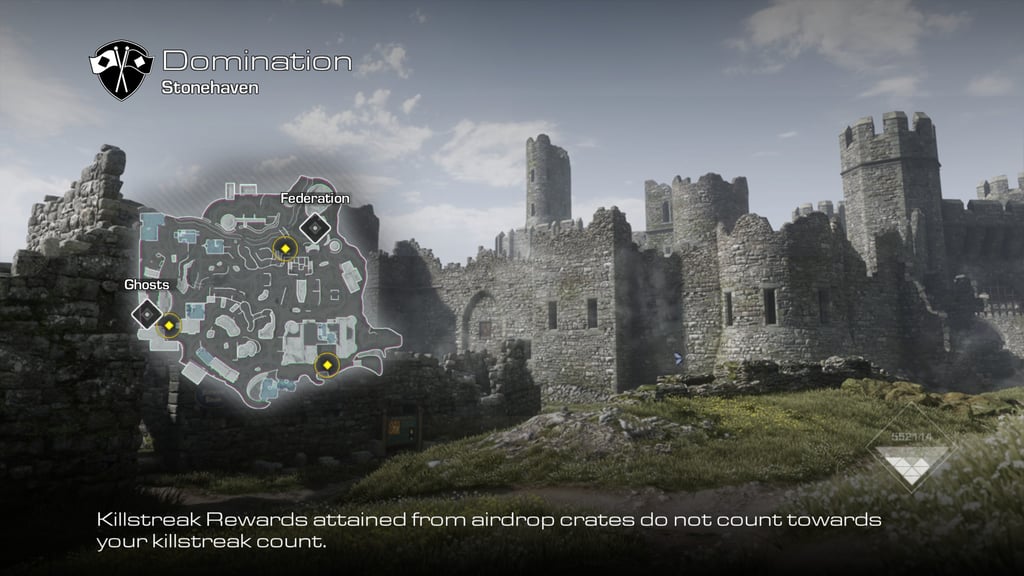

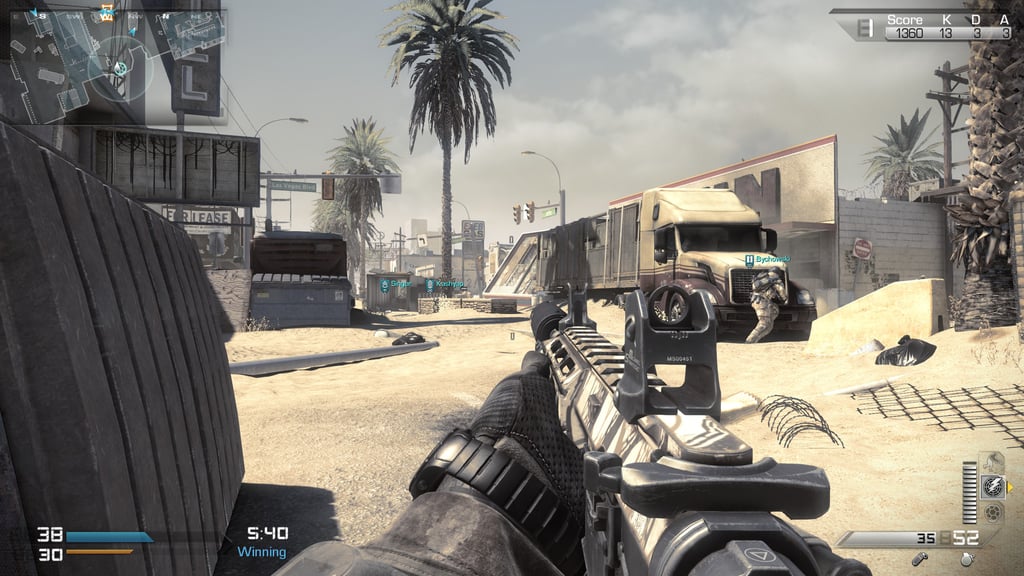

Low TTK (Time-To-Kill)
Call of Duty Ghosts introduced a multiplayer where it fosters a more strategic playstyle, where it is focused on more on the slower gameplay. However, players disliked this change, since the TTK was lowered to a point where players cannot make any mistakes. Because of the TTK being so low, players cannot afford to make errors and are forced to navigate the maps carefully.
Somehow, the TTK is comparable to the original Modern Warfare 2 and 3. In the Modern Warfare series, players have perks such as Stopping Power to take out enemies quickly and have certain guns such as the SPAS-12 taking out enemies in one shot. In Ghosts, nearly every gun can kill enemies within a couple of rounds, lowering the TTK. The only issue is that Ghosts embraces the slower gameplay, which if a player gets spotted, then they will get killed and will have to search for enemies again.
Call of Duty players enjoy being able to roam the maps and escape encounters. It makes the engagements a lot more interesting instead of running around the maps for one minute, only to be taken out by campers within one second.
While Ghosts sought to innovate the franchise and freshen up the formula, having low TTK made the gameplay less fun. At release, the gameplay received criticism and led to the community discussing weapon balancing. This essentially made fans question and examine what makes the Call of Duty series' multiplayer mode enjoyable.
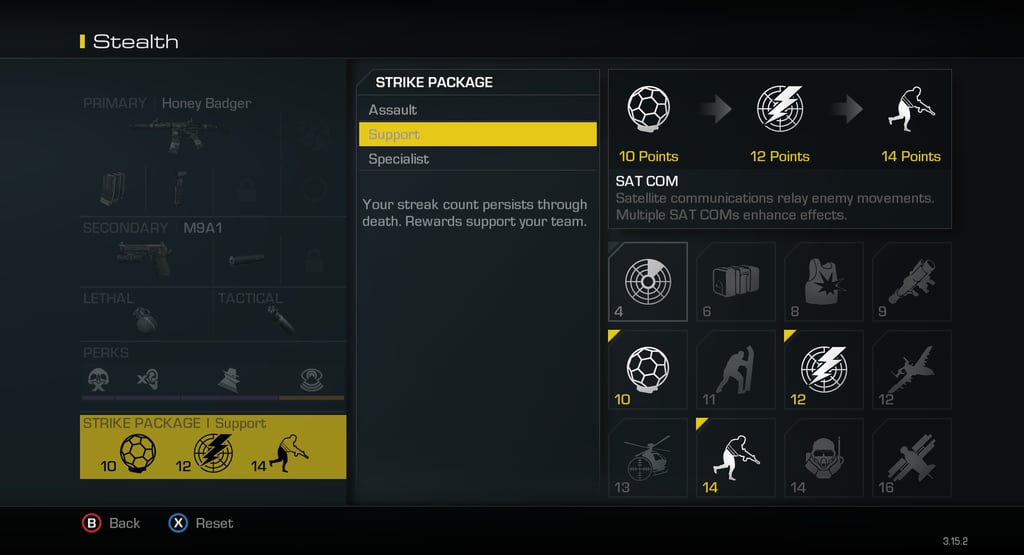

Weak Pointstreaks
One massive criticism is the pointstreaks. Many consider streaks a highlight of the franchise. The reason is players love being rewarded after completing objectives and getting kills, leading to using insane streaks such as the Chopper Gunner from Modern Warfare 2. The Chopper Gunner was extremely overpowered, dominating matches and simply takes out enemies even when just spawning in the maps. Streaks like this one increases the enjoyment of the gameplay.
In Ghosts, the developers nerfed several streaks and replaced some with weaker variants. SATCOMs have replaced UAV. The reason is that players were spamming UAVs in previous games, where there'd be at least three UAVs in the sky. Players deemed this as annoying and unbalanced, which the developers responded by replacing it with SATCOMs. The problem is that the SATCOM is just much worse.
SATCOMs require players to place the streak manually somewhere on the map, meaning players must waste time placing it. This leads to another issue where players can spot SATCOMs using a perk and use enemy SATCOMs with the Wiretap perk. Not only that, it requires multiple SATCOMs to perform as well as a UAV.
These types of nerfs applied to several streaks, and none of them were close to being as good as a UAV or the Chopper Gunner from Modern Warfare 2. Streaks do not have to be overpowered, but they still must be enjoyable instead of a chore to use. In Ghosts, the streaks were weak and only lasted for a couple of kills before being destroyed or expiring. Thanks to these weaknesses, the streaks were entirely forgettable and deemed as the worst variants in the franchise.
However, there are a few streaks that are pretty good. The KEM Strike streak is like MOAB in Modern Warfare 3, where players get to call in a nuke after achieving 25 kills. What made the KEM Strike streak excellent is that it takes out all the enemies on the map and changes the appearance of the map as well.
Were There Still Good Things About the Multiplayer?
While the multiplayer mode was, and still is, hated by the community, there are still some upsides with the unique designs. With having expansive maps, it allows players to navigate the maps much more freely and approach objectives in different ways. Traditionally, Call of Duty map design formula comprised having three lanes with some routes branching left and right. With Ghosts, it is much more different.
In Ghosts, the maps are designed differently and stand out from each other. This helps keeping the gameplay fresh and allows players to try out different classes. The map Sovereign takes place inside a factory and then you have Warhawk, which is a traditional three-lane map. Stonehaven is an enormous map, providing several long sightlines for snipers. Strikezone is a small-medium size map which the gameplay is much faster paced. The developers weren't afraid to experiment with the map designs, giving all the maps a unique identity.
Then, for the weak pointstreaks, they were weak, but the upside is that players cannot dominate matches with just a few select streaks. Players cannot just whip out a Chopper Gunner and spawn kill the opposing team for the entire match. Instead, the pointstreaks are weaker, but need to be used more methodically.
Conclusion
While Call of Duty Ghosts brought fresh elements to the franchise, the multiplayer mode attacked heavily, particularly because of the oversized maps. The expansive maps detracted from the adrenaline-filled experience fans love about the franchise and disliked the slower, methodical gameplay introduced. This game made it obvious fans favor the tighter maps leading to quick engagements. Weak pointstreaks and the low time to kill contributed to an experience, leaving players feeling unsatisfied.
As the franchise moves forward, it is important for the developers to learn from their mistakes to avoid this situation ever again. Understanding what made Ghosts' multiplayer unenjoyable will help shape future titles into a more fun, engaging experience.
Thank you for joining on this journey through the lows of one of gaming's most iconic franchises!
Insights
Explore gaming articles and insights at MyGamingRealm.
Support
© 2025. All rights reserved.
We do participate in the Amazon Associates Program, an affiliate advertising program to earn commissions by linking to Amazon.com and affiliated sites. As an Amazon associate, we earn from qualifying purchases. This is to support running the website.
